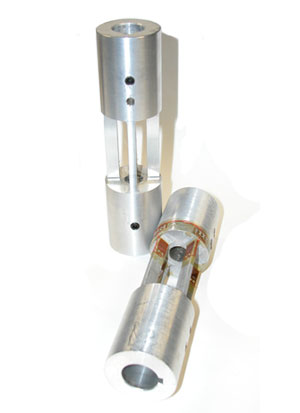
Load cells or also known as force cells are available in a variety of types which are designed to fulfill the needs and requirements of industrial and research application. Most of load cells design nowadays incorporates strain gauges as a critical element in sensing a specific object. The strain gauges are mostly made from semiconductor or foil.
However, strain gauges in load cells are mostly made from foil gauges, consequently, load cells with foil gauges are the most commonly found types in the world market. Foil gauges offer accurate examinations on common characteristics such as shear forces, compression and tensions.
While load cells with semiconductor strain gauges more or less placed in a more niche market where it is used by limited number of consumers. It has a big advantage of having a small size and wide gauge factor, which allows a much bigger outputs when subjected to the same amount of pressure or stress. Due its unique characteristic it used for portable instruments, which have to be both light and compact.
Most load cells use proving rings for measuring loads which is assisted with metal rings that are calibrated previously, any movements is measured accurately with a displacement transducer.
Early load cells are merely simple strain gauge for measuring direct contact of stresses which placed into the metal element that is subjected to needed forces, whether compressive or tensile. Another type called bending beam also uses strain gauge for measuring bending forces which are introduced to a sensing element.



 You will find a wide range of load cells which are sold nowadays, all have unique specs and are more suitable to specific tasks than others. Therefore can you determine which load cell to get for which task? Mentioned below is an examination of different load cells types that are available
You will find a wide range of load cells which are sold nowadays, all have unique specs and are more suitable to specific tasks than others. Therefore can you determine which load cell to get for which task? Mentioned below is an examination of different load cells types that are available Generally, the load cell is any electronic devices (or a transducer) that is employed to change a physical force to an electrical output. What does it mean? Your load cell is essentially a transducer that converts raw energy into a quantifiable electrical signal.
Generally, the load cell is any electronic devices (or a transducer) that is employed to change a physical force to an electrical output. What does it mean? Your load cell is essentially a transducer that converts raw energy into a quantifiable electrical signal.